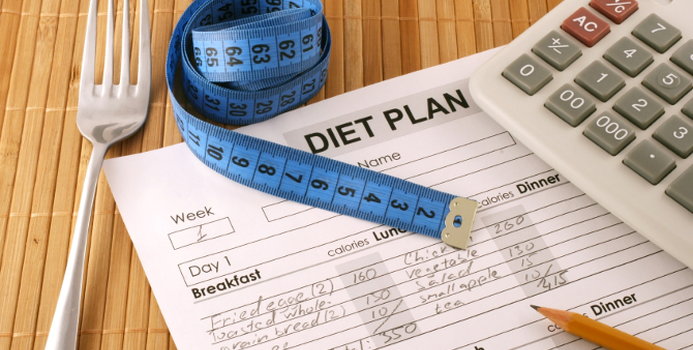Jane Doe is having a rough week. She went to her doctor's office and he told her she was overweight. He advised her to see a dietitian and to start a weight loss program. Jane is frustrated because she feels like she has looked at all the diets out there and has tried at least half of them. She wants to lose weight and keep it off in a healthy way and needs help on how to do this. Jane did the right thing by coming in to see a dietitian, who is a food and nutrition expert. She also did the right thing by checking with her doctor to make sure that it was safe for her to lose weight-- some people have certain health problems that make it harder and less safe to lose weight.
The first thing Jane's dietitian told her was that "diets" don't work because they are temporary. Once people lose the weight they want, they frequently go back to eating the way they used to and gain the weight back. Jane's dietitian told her to start thinking about healthy lifestyle choices, small things Jane could do in her everyday life to decrease the amount of calories she was eating while still eating healthy foods. After talking about some of these options, Jane wanted to know how many calories she should be eating per day and how much weight she should lose. This is what she learned:
- A healthy weight loss goal is 10% of her body weight over 6 months. Jane is 64 inches tall and weighs 220 pounds. This means that she should lose 22 (0.1 x 220) pounds over the next 26 weeks, from now (October) through March. Jane was shocked that her dietitian was suggesting she lose less than a pound a week until she learned that this rate of weight loss may help her keep the weight off in the long term.
- Jane also learned that for two weekdays and a weekend day, she should track everything she ate using an online calorie counter like FitDay.com. Once she learned how many calories she was eating per day, she could figure out how many calories to cut back on.
Jane chose to decrease her caloric intake by 250 calories every day and started tracking her calories online to make sure she was eating about 1,950 calories per day. She was careful to eat a balanced diet so that her body was getting the good nutrition it needed to be healthy and to help her lose weight. Cutting 250 calories out of her diet every day seemed difficult, until Jane realized that she could make small changes that added up to the 250 calories. She decided to eat an orange instead of drinking a glass of orange juice in the morning and save 40 calories while getting good fiber from the orange. She realized that by not having a mid day 20-ounce soda, she could save 240 calories. She also learned that if she used spices on her vegetables for dinner instead of using 2 tablespoons of butter, she saved 200 calories.
Jane also decided to walk home from work to add physical activity into her day. She learned that there was a way to approximate how many calories most people would burn by walking for 15 minutes at 3.5 miles per hours (17 minutes per mile). To do this, Jane took her weight in pounds, and multiplied it by 0.6 to get 132 calories. This is how many calories Jane will burn by going for a 15 minute walk at 3.5 mph. (To try this yourself, multiply your weight in pounds by 0.6, and that is how many calories you will burn in 15 minutes of continuous walking at 3.5 mph). This is an approximation, because every body and metabolism acts differently, but it can give you a general idea of how many calories you are burning. Jane's walk home every day was half an hour, so she knew she was burning roughly 265 Calories.
By changing a few small things in the way she ate everyday and by adding some simple physical activity, Jane is on the path to lose weight in a healthy manner.
Julie Smith, MS RD is a dietitian living in Boston Massachusetts, working in research. Her professional interest includes diabetes and glycemic control, weight management and obesity, and metabolism. She can be reached via email at at [email protected].



